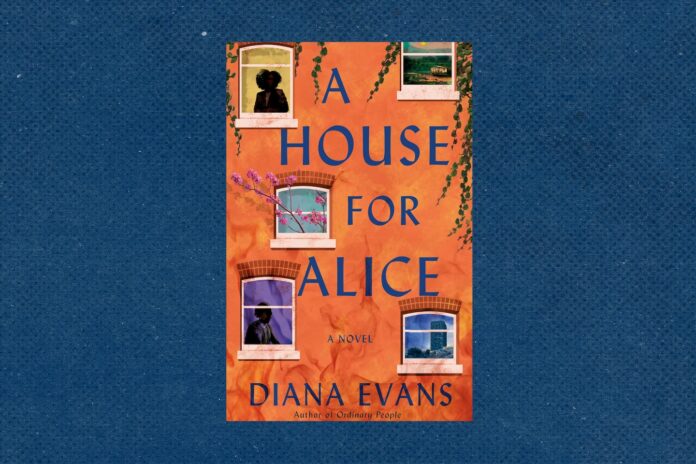What relation is born from these twinned — one fictional, and one fictionalized — blazes? Not much of one. In “A House for Alice,” the fourth novel by Diana Evans, the 2017 tragedy at Grenfell Tower is part of the historical composite (alongside Donald Trump, Meghan and Harry’s wedding, “the doomful cloud of Boris Johnson”) backgrounding the lives of characters who ought to be more affected by the death of this tired old man and his forgotten cigarette.
These characters include Cornelius Pitt’s widow — the titular Alice, from whom he was separated — and their three daughters, Melissa, Carol and Adel, along with their families and friends. In the wake of Cornelius’s death, Alice renews a dormant wish of returning to her homeland, where, as far as she knows, a house awaits. Once upon a time, Alice left Nigeria to become a Pitt in the U.K. Yet she “had never been fully reborn or reconfigured as the immigrant must be in order to thrive.” With Cornelius gone, it was as though “Kingsbury itself therefore no longer existed.” Alice “was a paper widow, fluttering in the British air, newly stranded, the cord to Kingsbury finally broken and catapulting her out towards the ocean.”
But “A House for Alice” is not about Alice. Nor is it about her daughters, each with her own notion about Alice’s leave-taking as it corresponds with unresolved grievances. In truth, the novel is a collection of characters and incidents that only barely relate to one another, much like the two fires reported in its opening pages. No event — past or impending — or person or setting can lay claim to the novel’s center of gravity, a multiplicity with potential that, as executed, resembles inattention.
We spend some time with Melissa’s ex-husband, Michael, and his second wife, Nicole, an R&B artist of faded renown with a child from a previous relationship. Michael, who talks politics on the radio, shares custody of his children, Ria and Blake, with Melissa; they divorced after he cheated on Melissa with Rachel, and Melissa cheated on him with Damian, who left Stephanie and their children, including his favorite child, Avril, who is friends with Ria. Further intergenerational, inter- and intra-ethnic entanglements abound. Quantity would not be an issue if such entanglements were allowed to matter, but our knowledge of how these people fit together must be surmised from the static insights of backstory. Incidents, arguments, fallings out, reconnections — all manner of human messes don’t happen so much as they are relayed as having happened.
Only a portion of these relationships can be better understood by readers who are familiar with Evans’s acclaimed third novel, “Ordinary People,” which follows the earlier lives of several of these characters. Even the new drama of “A House for Alice” lives in the pluperfect tense, in the “had sent,” “had been” and “had said” of previous significant incidents. Late in the novel, an emergency pulls Michael and Melissa back together, and too swiftly things fade to black. We pick up with them exchanging affectionate texts: “An understanding had settled between them … that they could be friends who had shared something special, the feelings they might still have for each other were acceptable, yet not to be enacted.”
“A House for Alice” is ambitious but suffers from disinterest in its own moving parts, including the tides of recent history within which it is conspicuously placed. Fans of “Ordinary People” may be intrigued to know what happens next to familiar names, but they will have to be content to hear of their stories rather than witness them.
Lauren Michele Jackson is an assistant professor of English and Black studies at Northwestern University. She is the author of “White Negroes.”
A note to our readers
We are a participant in the Amazon Services LLC Associates Program,
an affiliate advertising program designed to provide a means for us to earn fees by linking
to Amazon.com and affiliated sites.



